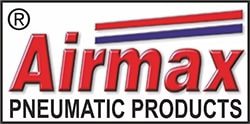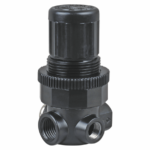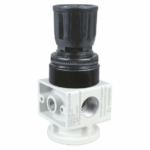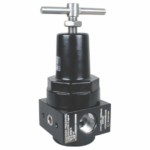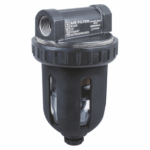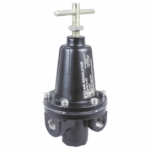Pneumatic Cylinder vs Hydraulic Cylinder Which is better?
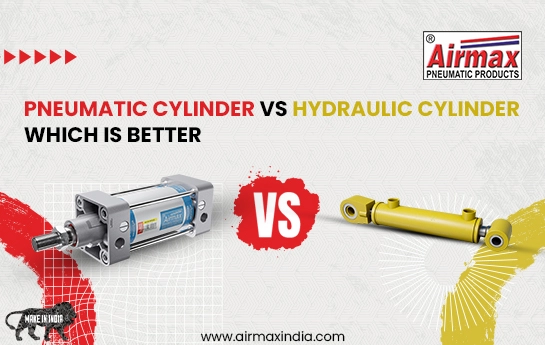
Understanding the difference between hydraulic cylinder and pneumatic cylinder systems is crucial for making informed product selections. Modern construction and manufacturing applications often use electrical, hydraulic, or pneumatic power. Pneumatics provides fluid power through pressurized air or gases, while hydraulics uses pressurized liquids like oil or water.
Factors such as cost-effectiveness, materials to be moved, resource availability, and space are considered when choosing between the two. Heavy lifting equipment requires more power and takes up more space than smaller applications like robotic labs or food processing. Each type of power has its advantages and disadvantages, depending on the situation. Airmax Pneumatics Ltd. offers and informative blog regarding the difference between both of them so Let’s explore the blog and learn the difference.
What is Pneumatics:
Let’s start with the basics to better comprehend the distinction between hydraulic and pneumatic system possibilities.
Pneumatic cylinders are a type of engineering that employs compressed gas or air to produce mechanical motion. Today, pneumatic systems are used in a variety of devices, ranging from small handhelds to big machinery, and serve a variety of purposes.
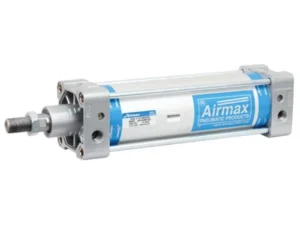
These pneumatic systems are often driven by compressed air or inert gas and are made up of interconnected components such as a gas compressor, transition lines, hoses, gas, air tanks, and standard cylinders. The airflow is controlled by a manual or automatic solenoid valve, and the pneumatic cylinder converts energy from compressed gas to mechanical energy.
Today, pneumatic applications often employ pressures of 80 to 100 pounds per square inch. In this system, the compressor’s capacity to compress gas is restricted by the compression ratio.
Pros & Cons of Pneumatic Compressed Air Systems:
Pneumatic cylinders are typically preferred over hydraulic cylinders due to their reduced cost, more flexibility, and increased safety. With this in mind, a pneumatic cylinder is ideally suited to situations where there is no chance of contamination, implying that they already provide a highly clean atmosphere. Pneumatic cylinders are useful for sectors such as biotechnology, dentistry, pharmaceuticals, and supplies.
When comparing hydraulic and pneumatic system designs, pneumatic systems are praised for their straight and simple layout, which is ideal for eliminating clogging and lowering maintenance. Furthermore, these systems are simple to deploy and portable.
Furthermore, pneumatic cylinders normally employ dry air or gas, which prevents moisture from affecting internal components.
Finally, pneumatic cylinders have a long operational life, are affordable, and are easy to buy and store, making them an excellent choice for various applications.
What is the Hydraulic System:
The hydraulic system is on the opposing side of the hydraulic vs pneumatic systems dispute.
Hydraulic systems regulate, generate, and transmit power using pressured fluid. This technology relies on mechanical qualities and the usage of liquids to work.
Hydraulic cylinders include various components, including a pump and valves that regulate the force and velocity of actuators. This creates a powerful system, with hydraulic cylinders used in industrial applications with pressures ranging from 1,000 to 5,000 psi, or more than 10,000 psi for specific applications.
Hydraulic systems, unlike pneumatic systems, are typically massive and sophisticated. Hydraulic cylinders take up more space, and a container is required to keep hydraulic fluid as it passes through the system, making it a less portable alternative. With this in mind, hydraulic cylinders are often more costly, despite their ability to lift and move considerably heavier items.
Pros & Cons of Hydraulic Systems:
Hydraulic cylinders are ideal for transferring bigger weights than pneumatic cylinders because liquids compress more easily. Furthermore, these hydraulic cylinders may perform many functions at once, such as lubrication, cooling, and power transmission, and they work at greater pressures to create more force.
Hydraulic cylinders can deliver greater force and lift larger things, but they are also far more complex than pneumatic cylinders. Because they involve hydraulic fluid, a viscous fluid that takes more energy to move, they are more expensive to maintain and store, in addition to the heavy equipment.
Furthermore, if a hydraulic cylinder leaks, it might cause major problems. As a result, these systems are not suitable for food applications due to the significant danger of hydraulic oil leakage. While appropriate maintenance can help to reduce the danger of leakage, pneumatic cylinders are still preferred in more important applications, like as food.
Key Features of Pneumatic Cylinders:
There are several aspects to consider when purchasing pneumatic equipment.
Pneumatic cylinders are part of a high-pressure system that generates force using compressed air. While the initial cost of this equipment is substantially lower than that of a hydraulic-powered machine, it also provides greater flexibility and improves overall system safety.
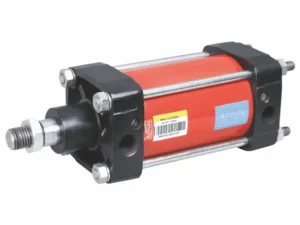
Furthermore, because pneumatic actuators are less prone to stress damage, they have a longer operational life and require less maintenance. With this in mind, pneumatic cylinders are utilized for a variety of applications, including powering vacuum pumps, manufacturing and assembly lines, and more.
Because of the way pneumatic systems are built, they struggle to maintain a steady velocity and are less controlled than hydraulic-powered equipment, as well as having less force capacity.
Key Features of Hydraulic Cylinders:
Hydraulic-powered devices generate force using pressurized fluids such as oil, glycol, or another flame-resistant liquid. Fluids circulate throughout the system, creating force in various locations to cause movement. Hydraulic cylinders with this design offer a larger force capacity and may be controlled more precisely.
With this high-power operation Hydraulic Cylinders are used in a range of equipment, including:
- Elevators
- Turbines
- Dump truck lifts
- Excavation arms
- Front-Loaders
- Tractors
While hydraulic devices can withstand far greater power, they require frequent maintenance and are much more sophisticated. If you choose hydraulic applications, you must examine the equipment regularly to prevent system failure.
Which is Better? Pneumatic Cylinder or Hydraulic Cylinder:
When comparing hydraulic and pneumatic cylinder systems, there are several factors to consider.
First and foremost, pneumatic systems transmit power by compressing gas, whereas hydraulics employ liquid fluid power. Pneumatic applications, which rely on pressured systems, are limited to 100 pounds per square inch. Furthermore, their structure creates a delay in movement.
Hydraulics transfer liquids to distribute pressure in different places, resulting in a significantly greater force. With this in mind, hydraulic presses can generate pressures ranging from 1,500 to 10,000 PSI, allowing the systems to move and lift considerably heavier, bigger things.
In addition, hydraulic and pneumatic cylinders are constructed differently. Hydraulic systems, as predicted, are made of thicker metals that can endure high pressures.
Conclusion:
When deciding between pneumatic and hydraulic cylinders, the choice largely depends on the specific requirements of your application. Pneumatic cylinders are ideal for applications requiring high-speed, light-duty operations, and a cleaner environment, thanks to their use of compressed air. They are also typically more cost-effective and easier to maintain. On the other hand, hydraulic cylinders are the better choice for heavy-duty applications requiring higher force and precision, as they can handle greater loads and provide more consistent power.
At Airmax Pneumatics Ltd, we understand that each industry and application has unique needs. Our team of experts is dedicated to helping you choose the right solution, whether it’s a pneumatic or hydraulic cylinder, ensuring optimal performance and efficiency for your operations.
